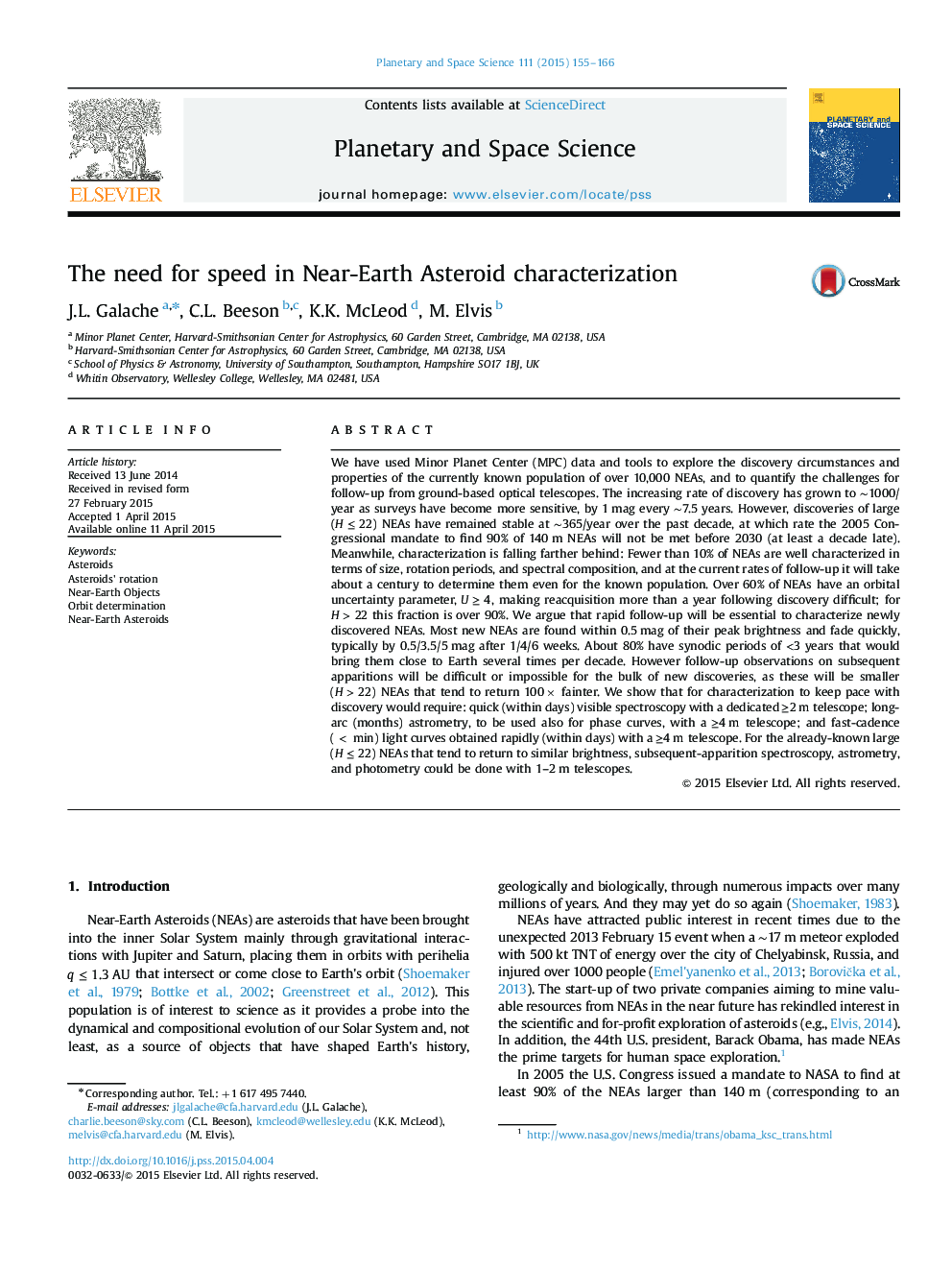| کد مقاله | کد نشریه | سال انتشار | مقاله انگلیسی | نسخه تمام متن |
|---|---|---|---|---|
| 1780995 | 1523928 | 2015 | 12 صفحه PDF | دانلود رایگان |
• We used MPC data to assess the challenges to follow-up observations of NEAs.
• Discovery of H<22H<22 NEAs has stagnated at a rate of ∼365/year.
• NEAs fade rapidly in days/weeks post-discovery and take years to reappear as bright.
• Characterization must take place within days of discovery.
• 2 m and 4 m telescopes can perform the multiple types of required characterization.
We have used Minor Planet Center (MPC) data and tools to explore the discovery circumstances and properties of the currently known population of over 10,000 NEAs, and to quantify the challenges for follow-up from ground-based optical telescopes. The increasing rate of discovery has grown to ∼1000/year as surveys have become more sensitive, by 1 mag every ∼7.5 years. However, discoveries of large (H≤22H≤22) NEAs have remained stable at ∼365/year over the past decade, at which rate the 2005 Congressional mandate to find 90% of 140 m NEAs will not be met before 2030 (at least a decade late). Meanwhile, characterization is falling farther behind: Fewer than 10% of NEAs are well characterized in terms of size, rotation periods, and spectral composition, and at the current rates of follow-up it will take about a century to determine them even for the known population. Over 60% of NEAs have an orbital uncertainty parameter, U≥4U≥4, making reacquisition more than a year following discovery difficult; for H>22H>22 this fraction is over 90%. We argue that rapid follow-up will be essential to characterize newly discovered NEAs. Most new NEAs are found within 0.5 mag of their peak brightness and fade quickly, typically by 0.5/3.5/5 mag after 1/4/6 weeks. About 80% have synodic periods of <3<3 years that would bring them close to Earth several times per decade. However follow-up observations on subsequent apparitions will be difficult or impossible for the bulk of new discoveries, as these will be smaller (H>22)(H>22) NEAs that tend to return 100× fainter. We show that for characterization to keep pace with discovery would require: quick (within days) visible spectroscopy with a dedicated ≥2m telescope; long-arc (months) astrometry, to be used also for phase curves, with a ≥4m telescope; and fast-cadence (
Journal: Planetary and Space Science - Volume 111, June 2015, Pages 155–166
